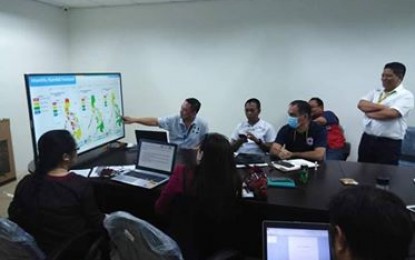By Perla Lena/PNA

ILOILO CITY — The city government through the City Disaster Risk Reduction and Management Council (CDRRMC) has started planning how to address the possible water crisis that could hit the metropolis in the coming months.
CRDRRM Office head, Donna Magno, said in an interview Thursday that the council already met on March 26 and agreed to create an ad hoc committee that would assess the effects of the El Niño phenomenon and identify immediate and short-term solutions.
“We urge our barangays to organize a task force to monitor water efficiency, protection and conservation so the CDRRMC will not have a hard time gathering data,” Magno said.
Depending on the result of the assessment, they will come up with a report to be submitted to the local chief executive to serve as basis of whether or not a state of calamity will be declared, she added.
“Or we will use the data to augment water in barangays and to ask for budget from our Local DRRM funds,” Magno said.
On March 25, the CDRRMC and various stakeholders also conducted a round-table discussion to determine the current water condition of the metropolis.
She said that according to the Philippine Atmospheric, Geophysical and Astronomical Service Administration, Iloilo is “experiencing (a) dry spell and the rainfall condition is way below normal level” as of March 19.
“If this continues, we will experience the peak by end of April and drought will be felt in Iloilo,” she added.
The Metro Iloilo Water District has assured that it has enough supply of water but added that it was having issues on the distribution side. The water utility recommended that perhaps they sign an agreement to allow the city government to source from their 10 fire hydrants for its water needs.
Volunteer fire brigades and the Bureau of Fire Protection also committed to help supply the water the city needs.
“We will just have to determine the logistical requirements. But before we can enter those interventions, we still have to conduct the risk assessment,” Magno said.
Currently, the CDRRMC is also coordinating with the barangays to know if they are experiencing problems in their supply, as well as to determine how many barangays are in need of water.
